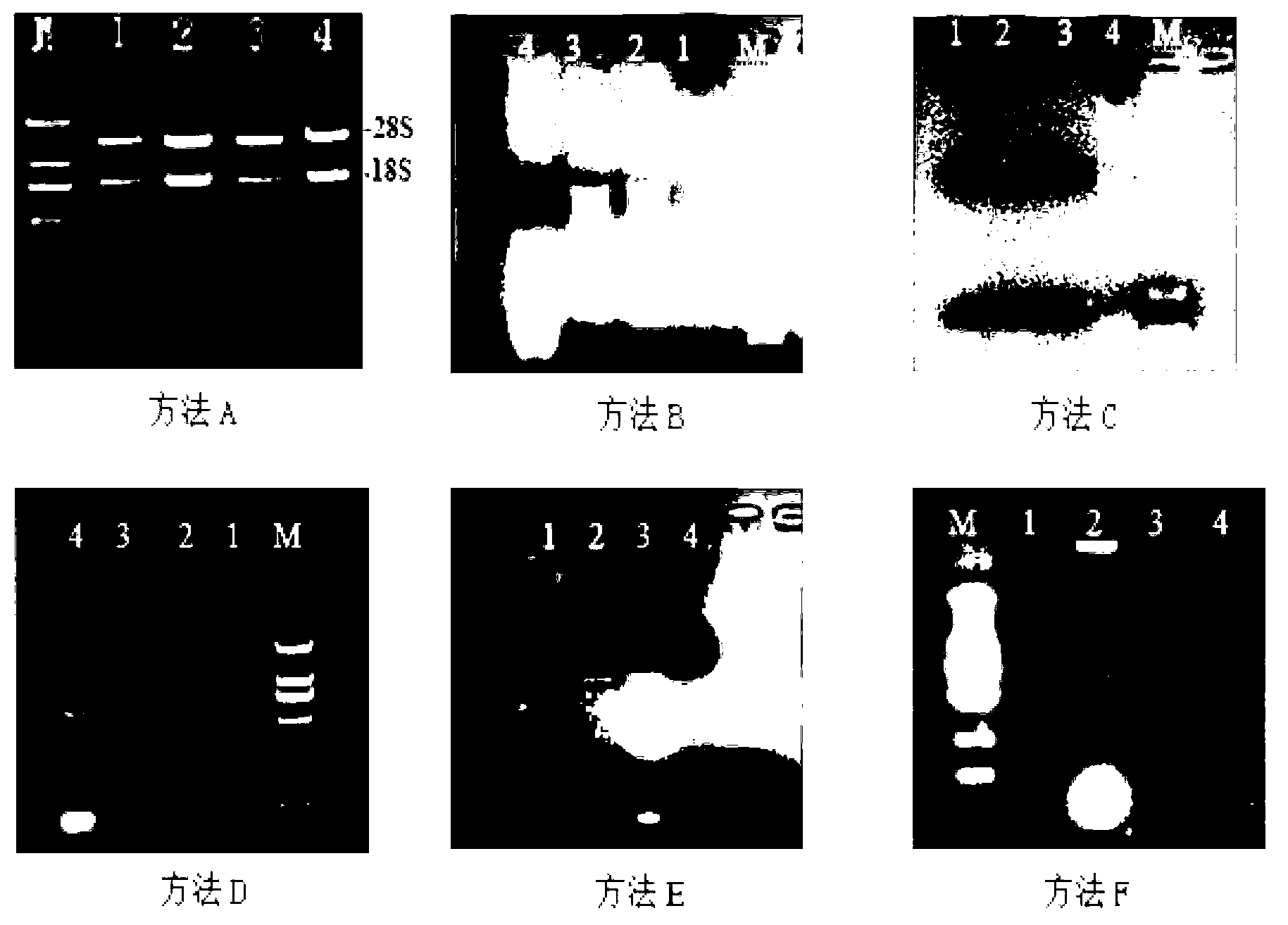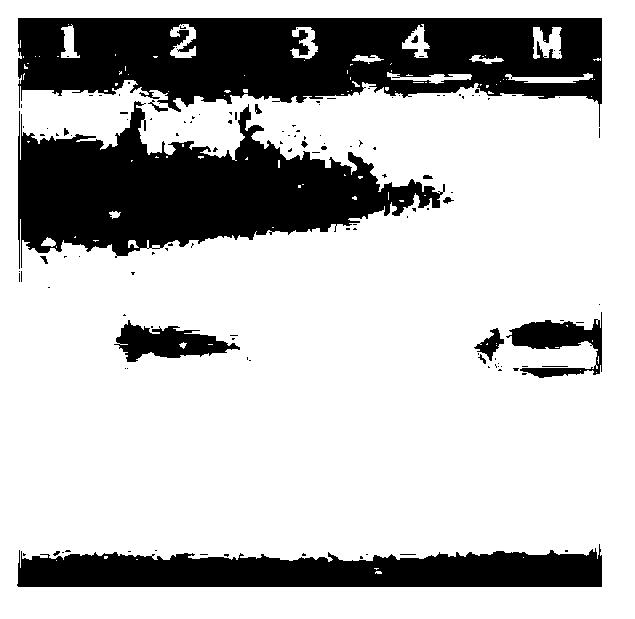Method for extracting total RNA from loropetalum chinense var. rubrum leaves
A technology of safflower wood and an extraction method, applied in the biological field, can solve the problems of lack of RNA extraction reagents, weak molecular mechanism research and application, limited application of modern molecular technology, etc., to achieve the effects of removing pollution and reducing RNA degradation.
- Summary
- Abstract
- Description
- Claims
- Application Information
AI Technical Summary
Problems solved by technology
Method used
Image
Examples
Embodiment 1
[0027] (1) Select a 10-15cm long branch with leaves from a healthy Safflower plant and quickly insert it into a beaker filled with 1 / 3-1 / 4 highly distilled water, and bring it back to the laboratory immediately;
[0028] (2) Weigh 80 mg of the leaves described in step (1), cut them into small pieces with a sterilized blade, put them into a sterilized 1.5ml centrifuge tube, soak the leaves in the centrifuge tube with liquid nitrogen for 10 seconds, and grind the leaves quickly with a small pestle into powder;
[0029] (3) Add 0.5ml plant total RNA extractant to the centrifuge tube with powdered leaves, lay the centrifuge tube flat, let it stand at room temperature for 5 minutes, centrifuge at 4°C and 12000rpm for 1 minute, and transfer the supernatant to an RNase-free centrifuge tube Wherein, the RNA extractant is purchased from RNAplant plus Reagent of Tiangen Biochemical Technology Co., Ltd., product number DP437, and β-mercaptoethanol is added before use, and the volume rati...
PUM
 Login to View More
Login to View More Abstract
Description
Claims
Application Information
 Login to View More
Login to View More - R&D
- Intellectual Property
- Life Sciences
- Materials
- Tech Scout
- Unparalleled Data Quality
- Higher Quality Content
- 60% Fewer Hallucinations
Browse by: Latest US Patents, China's latest patents, Technical Efficacy Thesaurus, Application Domain, Technology Topic, Popular Technical Reports.
© 2025 PatSnap. All rights reserved.Legal|Privacy policy|Modern Slavery Act Transparency Statement|Sitemap|About US| Contact US: help@patsnap.com



